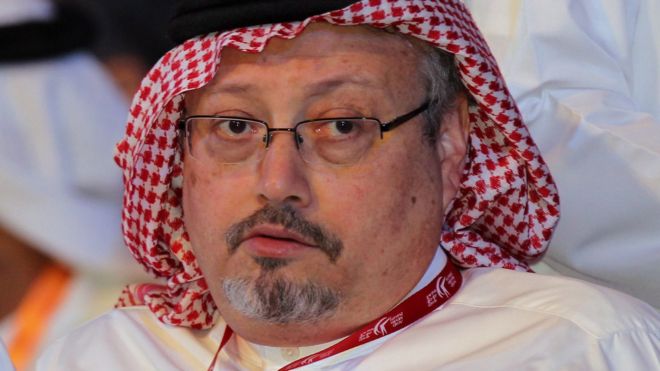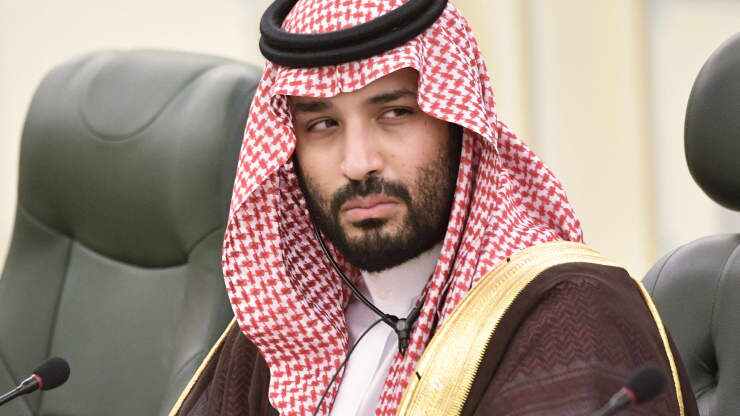Jamal Khashoggi: US names Saudi crown prince in connection with murder
A US intelligence report has implicated Saudi Crown Prince Mohammed bin Salman in the murder of exiled journalist Jamal Khashoggi in 2018.
The declassified report released by the Biden administration says the prince approved a plan to either capture or kill the US-based Saudi exile.
It is the first time America has publicly named the crown prince, who denies ordering the death.
Khashoggi was murdered while visiting the Saudi consulate in Istanbul.
He had been known for his criticism of the Saudi authorities.
US President Joe Biden is expected to take a firmer line than his predecessor Donald Trump on human rights and the rule of law in Saudi Arabia, a key American ally in the Middle East.
In a phone call on Thursday with the crown prince’s father, King Salman, the president “affirmed the importance the United States places on universal human rights and the rule of law”, the White House said.
According to sources quoted by Reuters news agency, the Biden administration is considering the cancellation of arms deals with Saudi Arabia that pose human rights concerns as well as the limiting of future military sales to “defensive” weapons.
Saudi authorities blamed his death on a “rogue operation” by a team of agents sent to return him to the kingdom, and a Saudi court tried and sentenced five individuals to 20 years in prison last September, after initially sentencing them to death.
In 2019, UN special rapporteur Agnes Callamard accused the Saudi state of the “deliberate, premeditated execution” of Khashoggi and dismissed the Saudi trial as an “antithesis of justice”.
How was Khashoggi killed?
The 59-year-old journalist went to the consulate in October 2018 in order to obtain papers allowing him to marry his Turkish fiancée.
He had allegedly received assurances from the crown prince’s brother, Prince Khalid bin Salman, who was ambassador to the US at the time, that it would be safe to visit the consulate. Prince Khalid has denied any communication with the journalist.
According to Saudi prosecutors, Khashoggi was forcibly restrained after a struggle and injected with a large amount of a drug, resulting in an overdose that led to his death. His body was then dismembered and handed over to a local “collaborator” outside the consulate, prosecutors said. The remains were never found.
Details were revealed in transcripts of purported audio recordings of the killing obtained by Turkish intelligence.
Khashoggi had once been an adviser to the Saudi government and close to the royal family but he fell out of favour and went into self-imposed exile in the US in 2017.
From there, he wrote a monthly column in the Washington Post in which he criticised the policies of Prince Mohammed.
On 2 October 2018, Jamal Khashoggi, a US-based journalist and critic of Saudi Arabia’s government, walked into the Saudi consulate in Istanbul, where he was murdered.
In the months that followed, conflicting narratives emerged over how he died, what happened to his remains, and who was responsible.
Saudi officials said the journalist was killed in a “rogue operation” by a team of agents sent to persuade him to return to the kingdom, while Turkish officials said the agents acted on orders from the highest levels of the Saudi government.
Who was Jamal Khashoggi?

As a prominent Saudi journalist, he covered major stories, including the Soviet invasion of Afghanistan and the rise of the late al-Qaeda leader Osama Bin Laden, for various Saudi news organisations.
For decades, the 59-year-old was close to the Saudi royal family and also served as an adviser to the government.
But he fell out of favour and went into self-imposed exile in the US in 2017. From there, he wrote a monthly column in the Washington Post in which he criticised the policies of Crown Prince Mohammed bin Salman, the son of King Salman and Saudi Arabia’s de facto ruler.
In his first column for the Post in September 2017, Khashoggi said he had feared being arrested in an apparent crackdown on dissent overseen by the prince.



